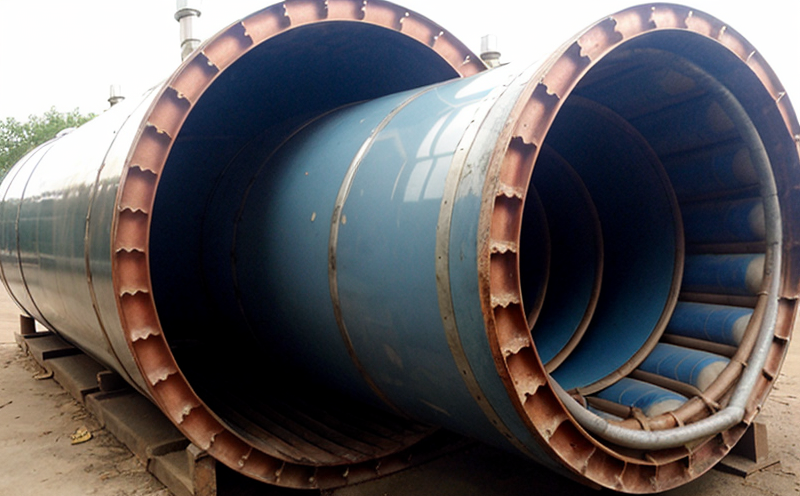Heat exchanger tube bundle inspection
In the realm of industrial and process engineering, heat exchangers are critical components used to transfer energy between two or more fluid streams. The heart of a heat exchanger lies in its tube bundle, where the core functionality is carried out. Ensuring that these tubes function optimally over extended periods is paramount for maintaining operational efficiency, safety, and compliance with industry standards.
The primary function of a heat exchanger tube bundle inspection involves evaluating the integrity, wear, corrosion, and potential defects within the tubes. This service typically involves non-destructive testing (NDT) methods such as ultrasonic testing (UT), radiography (RT), eddy current testing (ECT), and liquid penetrant testing (LPT). These techniques are chosen based on the specific requirements of the heat exchanger's design, operating conditions, and materials used.
The inspection process begins with a thorough understanding of the heat exchanger’s specifications. This includes detailed knowledge of its design pressure, temperature range, material composition, and intended service life. The inspection team then prepares for testing by carefully cleaning the tube bundle to remove any external contaminants that could interfere with NDT results.
Following preparation, ultrasonic testing is often employed to assess internal defects such as cracks or corrosion. Radiography provides a detailed view of the inside of the tubes, which can reveal more complex issues like pitting or erosion. Eddy current testing is particularly useful for detecting surface and near-surface flaws in ferromagnetic materials.
The findings from these inspections are meticulously documented and reported according to international standards such as ISO 9712:2012 (Non-destructive testing - Qualification and certification of non-destructive testing personnel) and ASTM E647-18 (Standard practice for inspection and evaluation of heat exchanger tube bundles).
The results of the inspections are crucial for several reasons. Firstly, they ensure that the heat exchanger continues to operate efficiently, which translates into cost savings through reduced energy consumption and maintenance costs. Secondly, compliance with industry standards and regulations is maintained, thereby protecting against potential legal liabilities.
Moreover, regular inspections allow for early detection of issues, enabling timely repairs or replacements before they lead to catastrophic failures. This proactive approach enhances the overall reliability and safety of industrial processes that rely heavily on heat exchangers.
In summary, a comprehensive heat exchanger tube bundle inspection is not merely a compliance exercise but a strategic investment in maintaining operational excellence. By leveraging advanced NDT techniques and adhering to stringent standards, this service ensures optimal performance, prolonged service life, and enhanced safety for industrial operations.
Why It Matters
The importance of heat exchanger tube bundle inspection cannot be overstated in industries that depend on efficient energy transfer. For quality managers and compliance officers, ensuring the integrity of these critical components is essential to prevent costly downtime and ensure regulatory adherence.
R&D engineers benefit from this service by gaining insights into potential design improvements and material optimizations. Procurement professionals can leverage inspection results to make informed decisions about sourcing materials that meet stringent performance criteria.
Regular inspections are vital for several reasons:
To maintain operational efficiency, minimizing downtime due to failures.
To ensure compliance with industry standards and regulations.
To detect defects early, allowing for timely repairs or replacements.
To enhance safety by preventing catastrophic failures that could lead to accidents or environmental damage.
In essence, a robust heat exchanger tube bundle inspection program is a cornerstone of industrial reliability and sustainability. It serves as a proactive measure to safeguard operations against unforeseen disruptions and ensure long-term viability.
Industry Applications
| Industry Sector | Application |
|---|---|
| Chemical Processing | Evaluating the integrity of heat exchangers in chemical production processes. |
| Petrochemicals | Assessing tube bundles used in refining and petrochemical processing equipment. |
| Power Generation | Inspection of condensers and heaters within power plant heat exchanger systems. |
| Bio-pharmaceuticals | Evaluating bioreactors and other critical heat exchange systems in pharmaceutical manufacturing. |
| Pulp and Paper | Ensuring the reliability of heat exchangers used in paper production processes. |
| Aerospace | Evaluating heat exchanger components for aircraft thermal management systems. |
| Pharmaceuticals | Inspecting heat exchangers in drug manufacturing and storage facilities. |
The wide range of industries that rely on heat exchanger tube bundle inspection underscores its significance. From chemical processing to aerospace, the integrity of these components is crucial for operational efficiency and safety. By adhering to stringent standards and employing advanced NDT techniques, this service ensures that critical industrial processes remain reliable and compliant.
Competitive Advantage and Market Impact
In a competitive market where reliability and compliance are key differentiators, heat exchanger tube bundle inspection offers significant advantages. For quality managers, the ability to demonstrate adherence to international standards such as ISO 9712 and ASTM E647 is crucial in building trust with clients and stakeholders.
Compliance officers can leverage this service to ensure that their processes meet all regulatory requirements, thereby minimizing legal risks. R&D engineers benefit from a deeper understanding of material performance and potential design improvements derived from inspection data. Procurement professionals can source materials based on stringent criteria, ensuring the highest quality components for use in heat exchangers.
The market impact of this service extends beyond individual companies to entire sectors. By promoting reliability and safety across industries, it contributes to a more sustainable and efficient global industrial landscape. Companies that excel in this area are well-positioned to gain competitive advantages and contribute positively to their respective markets.





